Contents
- I. Introduction to Ragdoll Cats
- II. The Characteristics of Ragdoll Cats
- III. The History and Origin of Ragdoll Cats
- IV. Understanding the Demand for Ragdoll Cats
- V. Factors Contributing to the High Cost of Ragdoll Cats
- VI. Frequently Asked Questions about Ragdoll Cats
- 1. What is a Ragdoll cat?
- 2. How did Ragdoll cats get their name?
- 3. Are Ragdoll cats good with children?
- 4. Do Ragdoll cats require a lot of grooming?
- 5. Are Ragdolls prone to any health issues?
- 6. Can Ragdoll cats be kept as indoor pets?
- 7. How long do Ragdoll cats typically live?
- 8. Are Ragdolls known for their vocalization?
- 9. Do Ragdoll cats get along well with other pets?
- 10. What is the price range for Ragdoll cats?
- VII. Ragdoll Cats’ Health and Care Requirements
- VIII. Tips for Finding a Reputable Ragdoll Cat Breeder
- IX. Ragdoll Cats vs. Other Cat Breeds: A Comparison
I. Introduction to Ragdoll Cats
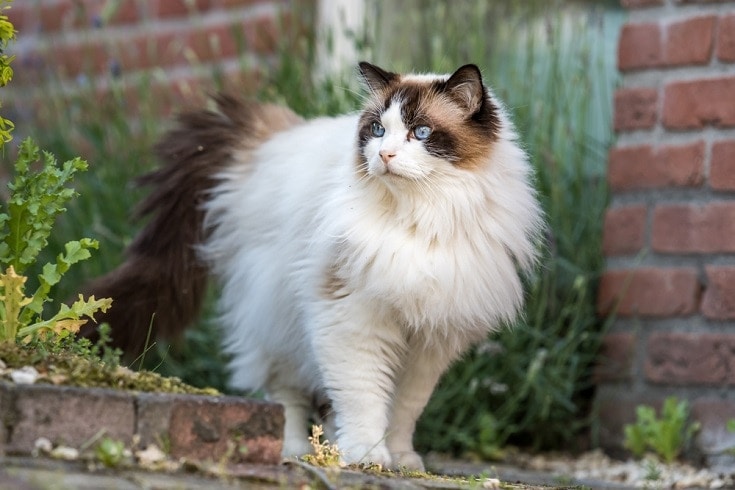
Ragdoll cats are a unique and fascinating breed that has gained popularity among cat lovers around the world. Known for their stunning blue eyes, silky fur, and gentle demeanor, these cats have captured the hearts of many. In this article, we will explore why Ragdoll cats are so expensive and what makes them truly special.
1. The Origin of Ragdoll Cats
The history of Ragdoll cats dates back to the 1960s when a woman named Ann Baker developed the breed in California, USA. She crossed a white long-haired Persian cat with a Birman cat, resulting in kittens with unique traits. These kittens displayed a docile temperament, plush fur, and striking blue eyes, which became the defining characteristics of the Ragdoll breed.
2. The Ragdoll’s Unique Personality
One of the reasons why Ragdoll cats are highly sought after is their friendly and docile nature. They are known for their calm and relaxed temperament, making them excellent companions for families and individuals alike. Ragdolls are often described as “puppy-like” cats due to their tendency to follow their owners around, greet them at the door, and enjoy being cuddled and held.
3. The Beauty of Ragdoll Cats
Ragdoll cats are undeniably beautiful creatures. They have a semi-long, silky coat that comes in various patterns and colors, including seal, blue, chocolate, lilac, and more. Their stunning blue eyes are one of their most captivating features and add to their overall charm. Additionally, Ragdolls have a muscular and large build, making them quite impressive to look at.
4. The Care and Maintenance of Ragdoll Cats
Ragdolls require regular grooming to keep their coat in good condition. Their fur is prone to matting, so regular brushing is necessary to prevent tangles. They also need their nails trimmed regularly, as well as routine veterinary care to ensure their overall health. Ragdolls are indoor cats and should be kept in a safe and secure environment.
5. The Rarity and Demand for Ragdoll Cats
The fact that Ragdoll cats are a relatively rare breed contributes to their high price tag. Breeders carefully select and breed Ragdolls to maintain their unique characteristics, making them somewhat exclusive. Additionally, their popularity has grown over the years, leading to an increased demand for these beautiful felines.
II. The Characteristics of Ragdoll Cats
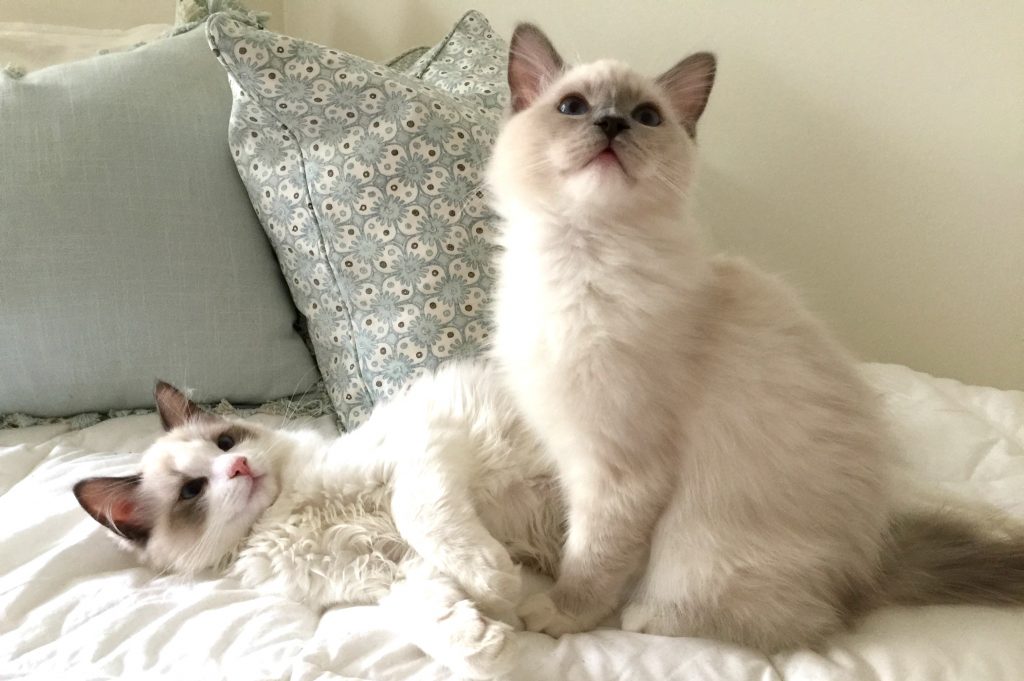
When it comes to feline companions, Ragdoll cats are truly a breed apart. Known for their stunning blue eyes, silky fur, and affectionate nature, these cats have become increasingly popular among pet lovers. Understanding the characteristics of Ragdoll cats can help explain why they are often considered a prized breed.
1. Temperament
Ragdolls are known for their gentle and laid-back temperament. They are typically docile and easygoing, making them great companions for families, seniors, and individuals looking for a calm and peaceful pet. These cats are often described as “puppy-like” due to their tendency to follow their owners around and seek out human interaction.
2. Size and Appearance
Ragdolls are large, muscular cats with a semi-longhair coat. They have sturdy bodies and a characteristic floppy posture, which adds to their charm. Their fur is soft and plush, requiring regular grooming to keep it looking its best. Ragdolls come in various colors and patterns, including seal, blue, chocolate, lilac, flame, and cream, among others.
3. Sociability
Ragdolls are known for their social nature and love being in the company of humans and other pets. They are not usually solitary cats and thrive in households with plenty of social interaction. Ragdolls enjoy being cuddled, petted, and held, earning them the nickname “lap cats.” They also tend to get along well with other animals, including dogs, making them a great choice for multi-pet households.
4. Intelligence
Despite their sweet and easygoing nature, Ragdolls are intelligent cats. They are quick learners and can be taught tricks and commands. Many Ragdolls also enjoy interactive toys and puzzles that keep their minds stimulated. Their intelligence makes them adaptable to different environments and allows them to form strong bonds with their human companions.
5. Health
Ragdolls are generally healthy cats, but like any breed, they can be prone to certain genetic health issues. These may include hypertrophic cardiomyopathy, a heart condition, and polycystic kidney disease. Regular veterinary check-ups and proper care can help ensure the well-being and longevity of Ragdoll cats.
III. The History and Origin of Ragdoll Cats
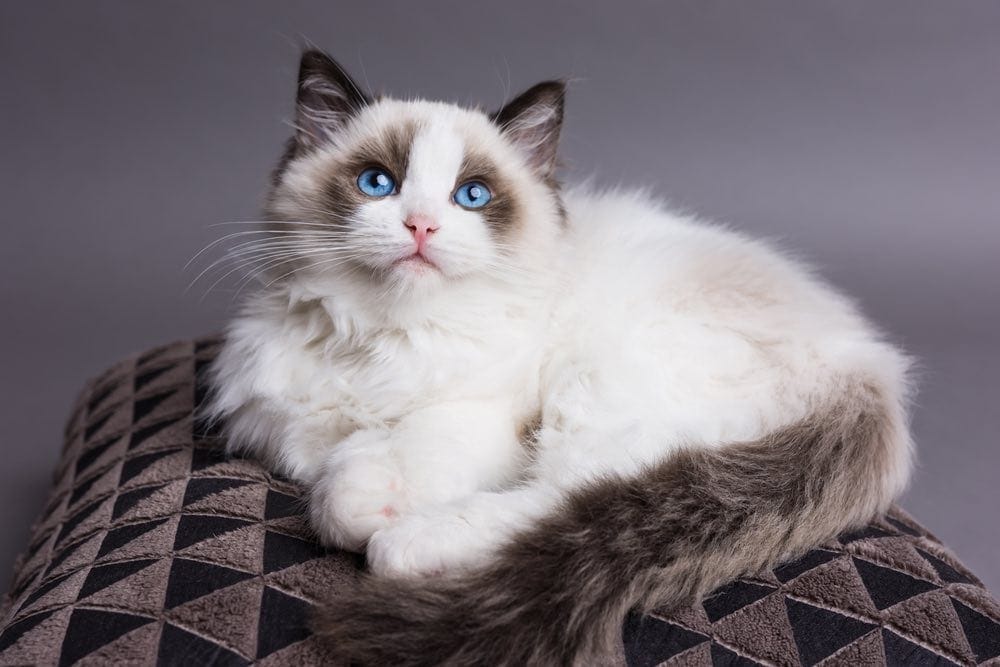
Ragdoll cats are known for their striking appearance, gentle temperament, and affectionate nature. But have you ever wondered about the history and origin of these fascinating felines? Let’s delve into the captivating story behind the Ragdoll breed.
The Beginnings
The Ragdoll breed was first developed in the 1960s by a woman named Ann Baker, who lived in Riverside, California. It all began when Ann’s neighbor’s cat, Josephine, was involved in a serious accident. Surprisingly, Josephine not only survived but also displayed a change in her temperament and appearance after the accident.
The Unique Traits
Josephine, a white Angora-type cat, had kittens with distinct characteristics. These kittens had captivating blue eyes, semi-longhair coats, and a remarkable tendency to go completely limp when picked up or held, hence the name “Ragdoll.” Their gentle and trusting nature made them stand out from other cat breeds.
Breeding the Ragdolls
Aware of the unique attributes of Josephine’s kittens, Ann Baker decided to embark on a breeding program to establish the Ragdoll breed. She selectively bred Josephine’s offspring with other cats, including Persian, Birman, and Burmese cats, to refine and strengthen the breed’s distinctive traits.
Recognition and Popularity
In 1971, the Ragdoll breed was officially recognized by major cat associations, such as the International Cat Association (TICA) and the Cat Fanciers’ Association (CFA). The breed gained popularity rapidly, captivating cat lovers around the world with their enchanting looks and endearing personalities.
Ragdolls Today
Ragdoll cats are now cherished pets in households worldwide. They continue to be bred selectively to maintain their unique characteristics and ensure the preservation of the breed. Ragdolls are known for their large size, silky fur, and striking blue eyes. Their affectionate and docile nature makes them perfect companions for families and individuals alike.
The history and origin of Ragdoll cats reveal a captivating story of accidental discovery and deliberate breeding. Thanks to Ann Baker’s vision and dedication, these beautiful felines have become a beloved breed, sought after by cat enthusiasts everywhere. Whether it’s their enchanting appearance or their gentle disposition, Ragdolls continue to capture the hearts of many.
IV. Understanding the Demand for Ragdoll Cats
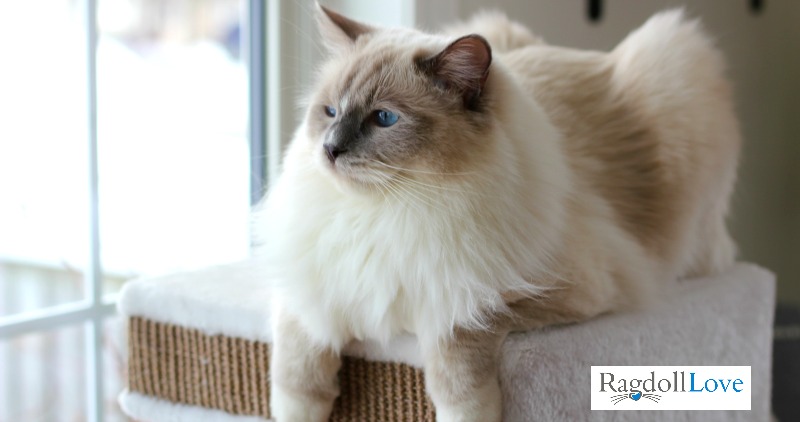
Ragdoll cats are known for their unique characteristics, stunning appearance, and gentle demeanor. They have become increasingly popular among cat lovers, resulting in a high demand for these furry companions. Understanding the reasons behind this demand can shed light on why Ragdoll cats are so expensive.
Their Unique Personality
One of the key factors driving the demand for Ragdoll cats is their exceptional personality. These cats are known for being extremely friendly and affectionate, often referred to as “puppy-like” due to their tendency to follow their owners around and seek attention. They are also known for their calm and docile nature, making them ideal companions for individuals and families alike.
Beautiful Appearance
Ragdolls have a striking appearance that captivates many cat enthusiasts. With their gorgeous blue eyes, silky semi-long fur, and stunning color patterns, Ragdolls are often considered one of the most beautiful cat breeds. Their large size and muscular build add to their overall appeal, making them incredibly photogenic and sought after by those looking for an aesthetically pleasing pet.
Health and Genetic Factors
Another aspect that contributes to the demand for Ragdoll cats is their overall health and genetic background. Responsible breeders prioritize the well-being of their cats, ensuring they are free from common genetic disorders and health issues. This gives potential owners peace of mind, knowing that their Ragdoll is less likely to encounter significant health problems compared to some other breeds.
Longevity and Companionship
Ragdolls are known to have a relatively long lifespan, with many living well into their teens. This longevity is appealing to cat lovers who are looking for a long-term companion and want to form a lasting bond with their pet. Ragdolls are known for their loyalty and their ability to form deep connections with their owners, making them cherished members of the family.
Rarity and Exclusivity
Lastly, the demand for Ragdoll cats is driven by their rarity and exclusivity. Ragdolls are a relatively new breed, and their controlled breeding ensures that the number of available kittens is limited. This exclusivity adds to their allure and contributes to their higher price tag. Owning a Ragdoll cat has become a symbol of prestige and affluence, further fueling the desire to have one.
V. Factors Contributing to the High Cost of Ragdoll Cats
Ragdoll cats are known for their striking appearance, gentle temperament, and loving nature. As a result, they have become one of the most sought-after cat breeds in the world. However, the high cost of Ragdoll cats can often raise eyebrows. In this section, we will explore the various factors that contribute to their steep price tag.
Breeding and Genetic Quality
One key factor behind the high cost of Ragdoll cats is the meticulous breeding process involved. Responsible Ragdoll breeders carefully select cats with desirable traits and conform to breed standards. They also conduct extensive health checks and genetic testing to ensure the kittens are healthy and free from hereditary diseases. This dedication to breeding top-quality Ragdolls requires time, effort, and expertise, which adds to the overall cost.
Rarity and Exclusivity
Ragdoll cats are relatively rare compared to other cat breeds. Their unique color patterns and striking blue eyes make them highly sought after by cat enthusiasts and collectors. Additionally, Ragdolls are a relatively new breed, with the breed’s development beginning in the 1960s. The limited number of Ragdolls available contributes to their exclusivity and drives up their price.
Health Guarantee and Vaccinations
Reputable Ragdoll breeders often provide a health guarantee for their kittens. This means that the breeder will cover any genetic health issues that may arise within a certain period after purchase. To ensure optimal health, Ragdoll kittens receive necessary vaccinations and veterinary care before being adopted. These additional expenses incurred by the breeders are reflected in the higher price of the cats.
Show Quality Standards
Ragdoll cats destined for the show ring undergo strict scrutiny against breed standards. These standards outline the ideal physical attributes, temperament, and behavior of Ragdolls. Show-quality Ragdolls have impeccable lineage, meet specific size requirements, and possess the desired coat colors and patterns. The meticulous breeding and selection process needed to produce show-quality Ragdolls contribute to their higher price.
Increased Demand and Popularity
Over the years, Ragdoll cats have gained immense popularity due to their docile and affectionate nature. They are often referred to as “puppy cats” because of their tendency to follow their owners around and seek attention. This surge in demand has naturally led to an increase in the price of Ragdolls, as breeders can command higher prices for their kittens.
VI. Frequently Asked Questions about Ragdoll Cats
Are you considering getting a Ragdoll cat as your new furry companion? Here are some frequently asked questions about Ragdoll cats to help you understand more about this unique breed:
1. What is a Ragdoll cat?
A Ragdoll cat is a large, affectionate, and semi-longhaired breed known for its striking blue eyes and silky-soft fur. They are known for their calm and gentle nature, making them great family pets.
2. How did Ragdoll cats get their name?
The breed was named “Ragdoll” because of their tendency to go limp and relax when picked up, just like a ragdoll. They have a relaxed and floppy demeanor, which adds to their charm.
3. Are Ragdoll cats good with children?
Yes, Ragdoll cats are usually very patient and gentle with children. They enjoy human companionship and are known for their tolerance towards handling, making them an excellent choice for families with young ones.
4. Do Ragdoll cats require a lot of grooming?
While Ragdoll cats have a semi-long coat, their fur is low-maintenance and doesn’t mat easily. Regular brushing once or twice a week should be sufficient to keep their coat healthy and free from tangles.
5. Are Ragdolls prone to any health issues?
Like any other breed, Ragdoll cats can be prone to certain health issues, such as hypertrophic cardiomyopathy (a heart condition), polycystic kidney disease, and bladder stones. However, responsible breeding practices can help minimize these risks.
6. Can Ragdoll cats be kept as indoor pets?
Yes, Ragdoll cats are well-suited for indoor living. They are not known for their hunting instincts and are generally content with a cozy and safe indoor environment. However, providing them with some supervised outdoor time can be beneficial for their mental stimulation.
7. How long do Ragdoll cats typically live?
Ragdoll cats have a relatively long lifespan compared to other cat breeds, usually ranging from 12 to 17 years. With proper care, a Ragdoll cat can live a healthy and happy life for many years.
8. Are Ragdolls known for their vocalization?
Ragdoll cats are not particularly vocal compared to some other breeds. They have a soft and gentle voice, and they usually express themselves through their affectionate nature rather than excessive meowing.
9. Do Ragdoll cats get along well with other pets?
Ragdolls are generally social and adaptable cats, and they can get along well with other pets, including dogs and other cats. However, like any introductions between pets, it is essential to supervise and gradually introduce them to ensure a smooth transition.
10. What is the price range for Ragdoll cats?
Ragdoll cats are often considered a high-end breed, and their prices can vary depending on factors such as pedigree, coat color, and the reputation of the breeder. On average, you can expect to pay between $800 to $2000 for a Ragdoll kitten.
Now that you have a better understanding of Ragdoll cats through these frequently asked questions, you can make an informed decision about whether this breed is the right fit for you and your family.
VII. Ragdoll Cats’ Health and Care Requirements
Ragdoll cats are known for their calm and gentle nature, making them wonderful companions. However, like any other pet, they require proper care and attention to ensure their well-being. Here are some important aspects to consider when it comes to the health and care requirements of Ragdoll cats.
1. Balanced Nutrition
Providing a balanced and nutritious diet is paramount to keeping your Ragdoll cat healthy. Choose high-quality cat food that meets their specific nutritional needs, which may vary depending on their age, weight, and activity level. Consult with your veterinarian to determine the best diet plan for your furry friend.
2. Regular Veterinary Check-ups
Just like humans, cats require regular medical check-ups to detect any potential health issues early on. Schedule routine visits to the veterinarian to ensure your Ragdoll cat is up to date on vaccinations, prevent parasites, and receive necessary preventive care. Regular check-ups help maintain their overall well-being and catch any health problems before they become serious.
3. Grooming Routine
Ragdoll cats have semi-long hair, which requires regular grooming to prevent matting and tangles. Brush their fur at least once a week to remove loose hair and prevent hairballs. Additionally, pay attention to their nails and keep them trimmed to avoid discomfort or injury. Dental hygiene is also crucial, so introduce a teeth-cleaning routine early on.
4. Safe Environment
Creating a safe and stimulating environment for your Ragdoll cat is essential. Ensure they have access to clean water, comfortable resting areas, and interactive toys to keep them mentally and physically active. Remove any potential hazards and secure windows and balconies to prevent accidents. Ragdolls are known for their trusting nature, so it’s important to keep them protected.
5. Regular Exercise
Although Ragdolls are generally less active than some other cat breeds, regular exercise is still important to keep them healthy and prevent obesity. Engage in playtime activities with interactive toys, and provide scratching posts and climbing structures to encourage physical activity.
By following these health and care requirements, you can ensure a happy and fulfilling life for your Ragdoll cat. Remember, their well-being is in your hands, so give them the love and attention they deserve.
VIII. Tips for Finding a Reputable Ragdoll Cat Breeder
When it comes to finding a reputable Ragdoll cat breeder, there are a few key factors to consider. By following these tips, you can ensure that you are getting a healthy and well-bred Ragdoll cat:
1. Research and Gather Information
Start by conducting thorough research on Ragdoll cat breeders in your area. Look for breeders who have a good reputation and positive reviews from previous customers. Check their websites, social media pages, and online forums to gather as much information as possible about their breeding practices and the health of their cats.
2. Visit the Breeder in Person
It’s important to visit the breeder’s facility in person to see firsthand how they care for their cats. Observe the cleanliness and overall condition of the breeding environment. Pay attention to the behavior and temperament of the cats to ensure they are well-socialized and healthy.
3. Ask for References
Don’t hesitate to ask the breeder for references from previous buyers. Speaking with other Ragdoll cat owners can give you valuable insights into the breeder’s reputation, the health of their cats, and the overall satisfaction of previous customers.
4. Inquire About Health Testing
A reputable Ragdoll cat breeder will conduct thorough health testing on their breeding cats to ensure they are free from genetic disorders and other health issues. Ask the breeder about the specific tests they perform and request documentation to verify the health status of the cats.
5. Get a Contract
Before finalizing the purchase, make sure to get a written contract from the breeder. The contract should outline the terms of the sale, health guarantees, and any additional agreements. This will protect both you and the breeder in case of any future issues.
By following these tips, you can find a reputable Ragdoll cat breeder who prioritizes the health and well-being of their cats. Remember to take your time, ask questions, and trust your instincts when choosing a breeder. A healthy and happy Ragdoll cat will be a cherished companion for many years to come.
IX. Ragdoll Cats vs. Other Cat Breeds: A Comparison
When it comes to choosing a cat breed, Ragdolls stand out from the crowd. They possess unique qualities and characteristics that set them apart from other cat breeds. Let’s take a closer look at how Ragdolls compare to other feline companions.
1. Temperament and Personality
Ragdolls are renowned for their sweet and gentle nature. Unlike some cat breeds that can be aloof or independent, Ragdolls love human companionship and crave attention. They are known to be docile, affectionate, and enjoy being held and cuddled. On the other hand, some cat breeds, like Siamese or Bengal cats, possess more active and mischievous personalities.
2. Size and Appearance
Ragdolls are considered one of the largest domestic cat breeds. They have a sturdy and muscular build, with males reaching weights of up to 20 pounds. Their striking blue eyes and semi-long, silky coats make them even more attractive. In comparison, breeds like the Maine Coon and the Norwegian Forest Cat also boast impressive size and beautiful fur, but their eye colors may vary.
3. Grooming Needs
When it comes to grooming, Ragdolls require regular brushing to keep their luxurious coats tangle-free and shiny. Their fur is not prone to matting, unlike some long-haired cat breeds such as Persians or Himalayans. However, like any cat, regular nail trimming, dental care, and occasional bathing are essential for overall hygiene.
4. Vocalization
Ragdolls are typically not as vocal as other cat breeds. They are known for their soft and gentle voices, often communicating through purrs and trills. Breeds like the Siamese or the Sphynx, on the other hand, are known for their vocal nature and ability to express themselves through a wide range of sounds.
5. Compatibility with Children and Other Pets
Ragdolls are known for their excellent compatibility with children and other pets. Their laid-back and tolerant nature makes them great companions for families. They are known to get along well with dogs and other cats, making integration into multi-pet households smoother. However, some cat breeds have more territorial or independent tendencies, which may require extra effort for socialization.
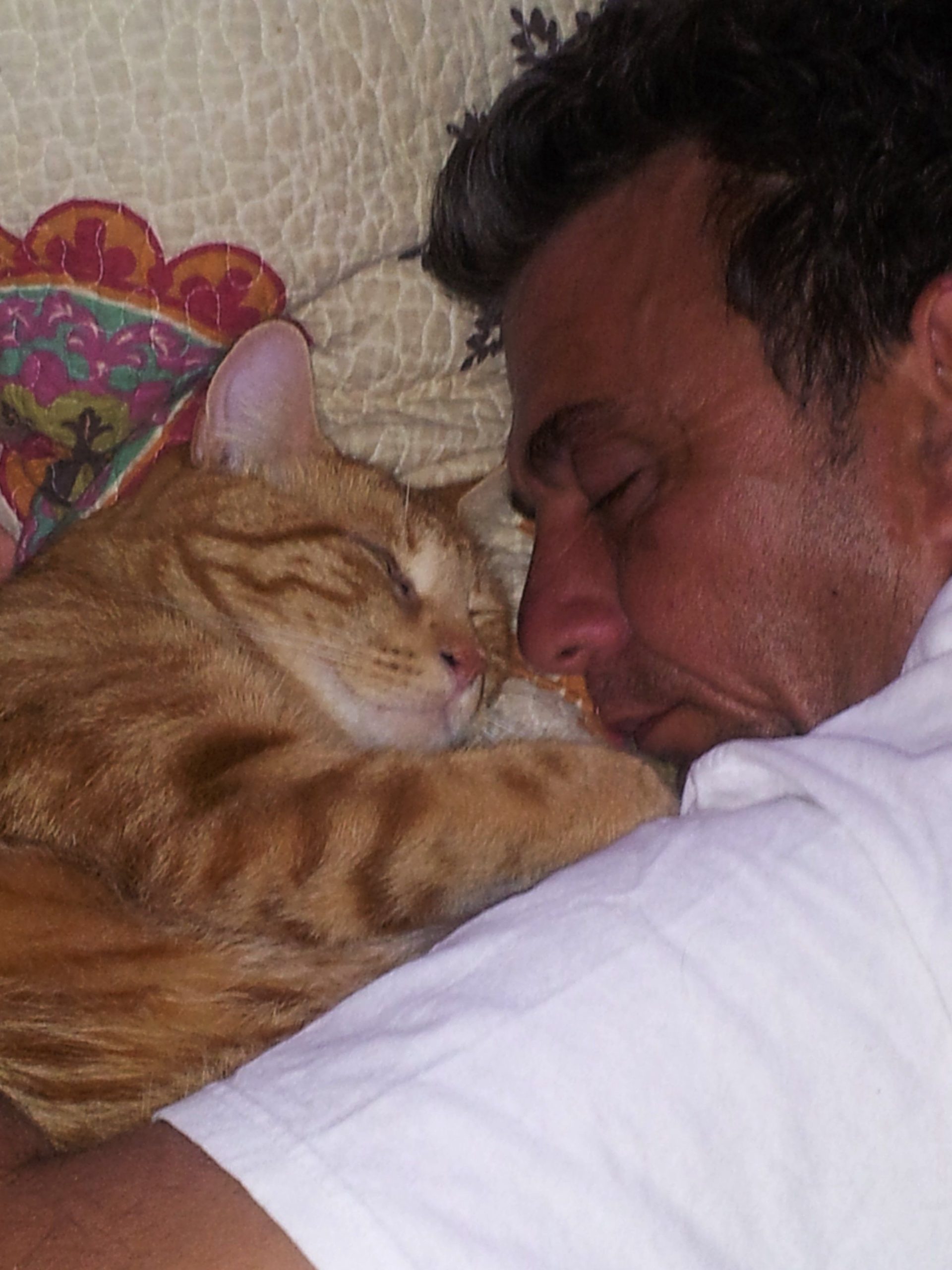
Jackson is an accomplished content writer with a flair for captivating storytelling. With a Bachelor’s degree in English Literature from the prestigious University of California, Berkeley, Hunter’s educational background has honed his writing skills to perfection. His love for felines is evident in his extensive knowledge of cat behavior and care, making him an expert in the field. Hunter’s passion for cats has led him to contribute insightful articles to various online platforms, providing valuable information and tips to cat owners worldwide. With his exceptional writing abilities and deep understanding of cats, Hunter continues to create engaging content that resonates with readers and leaves a lasting impact.
